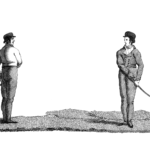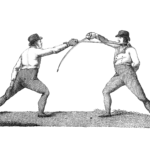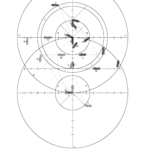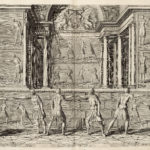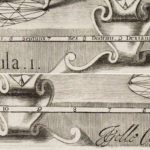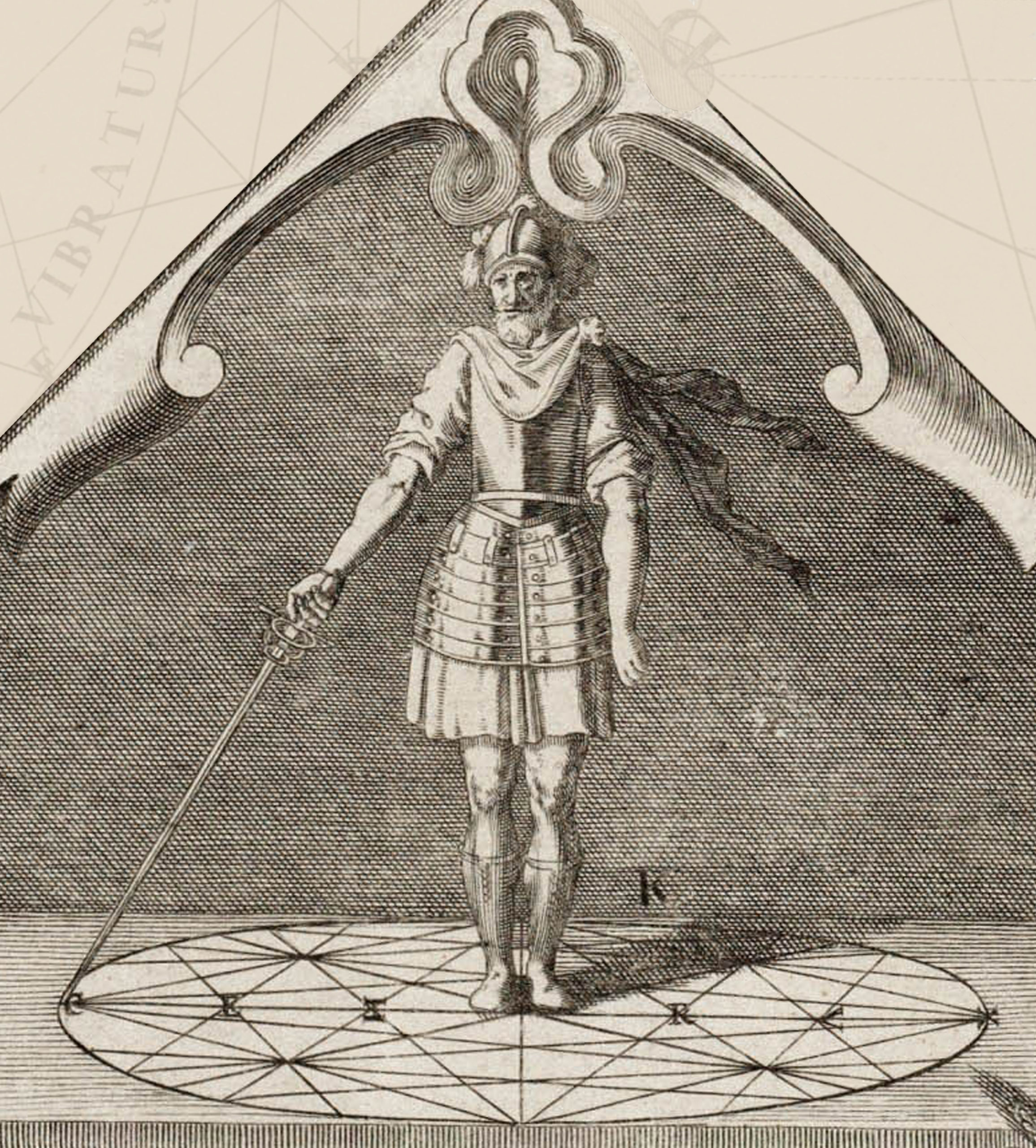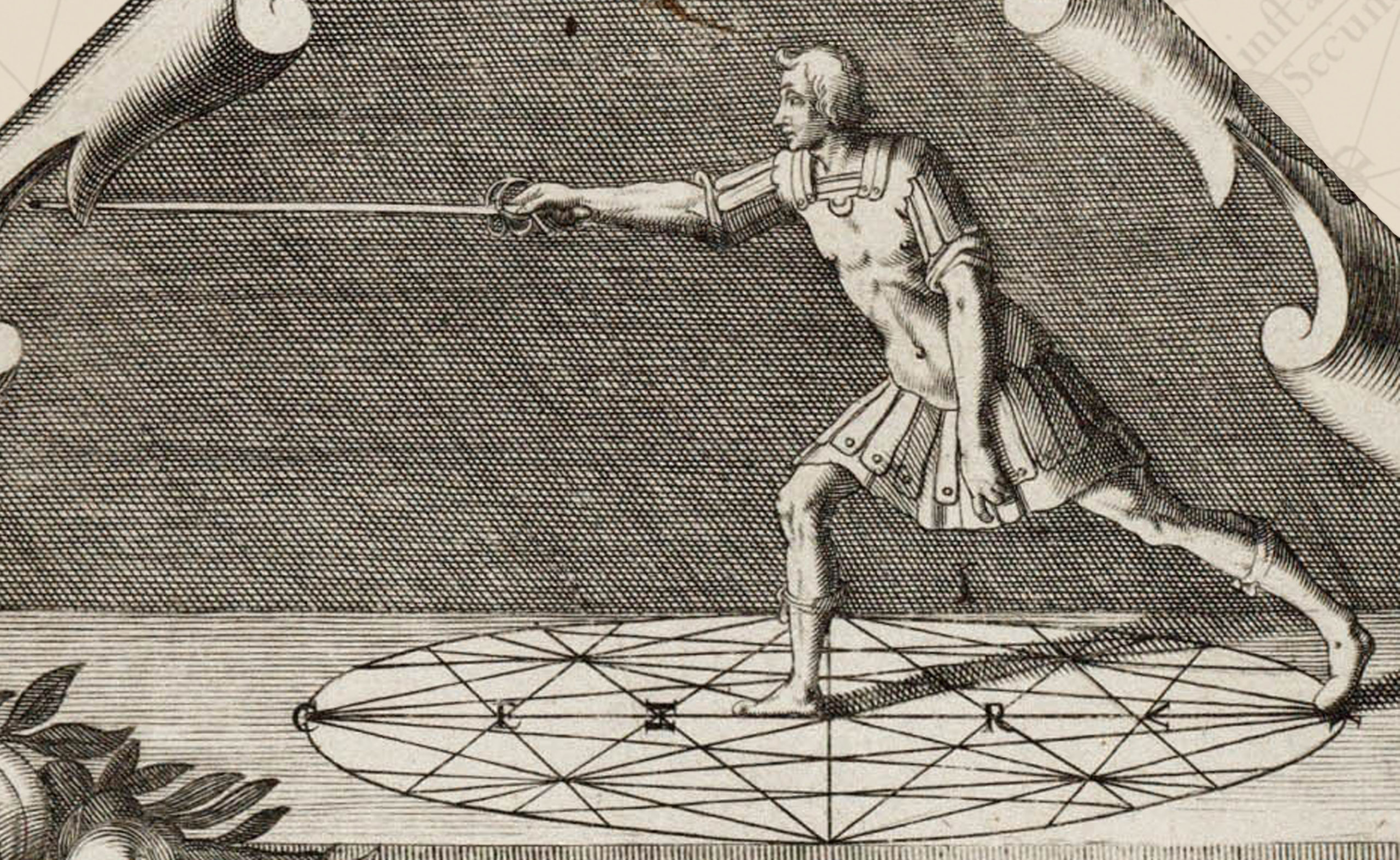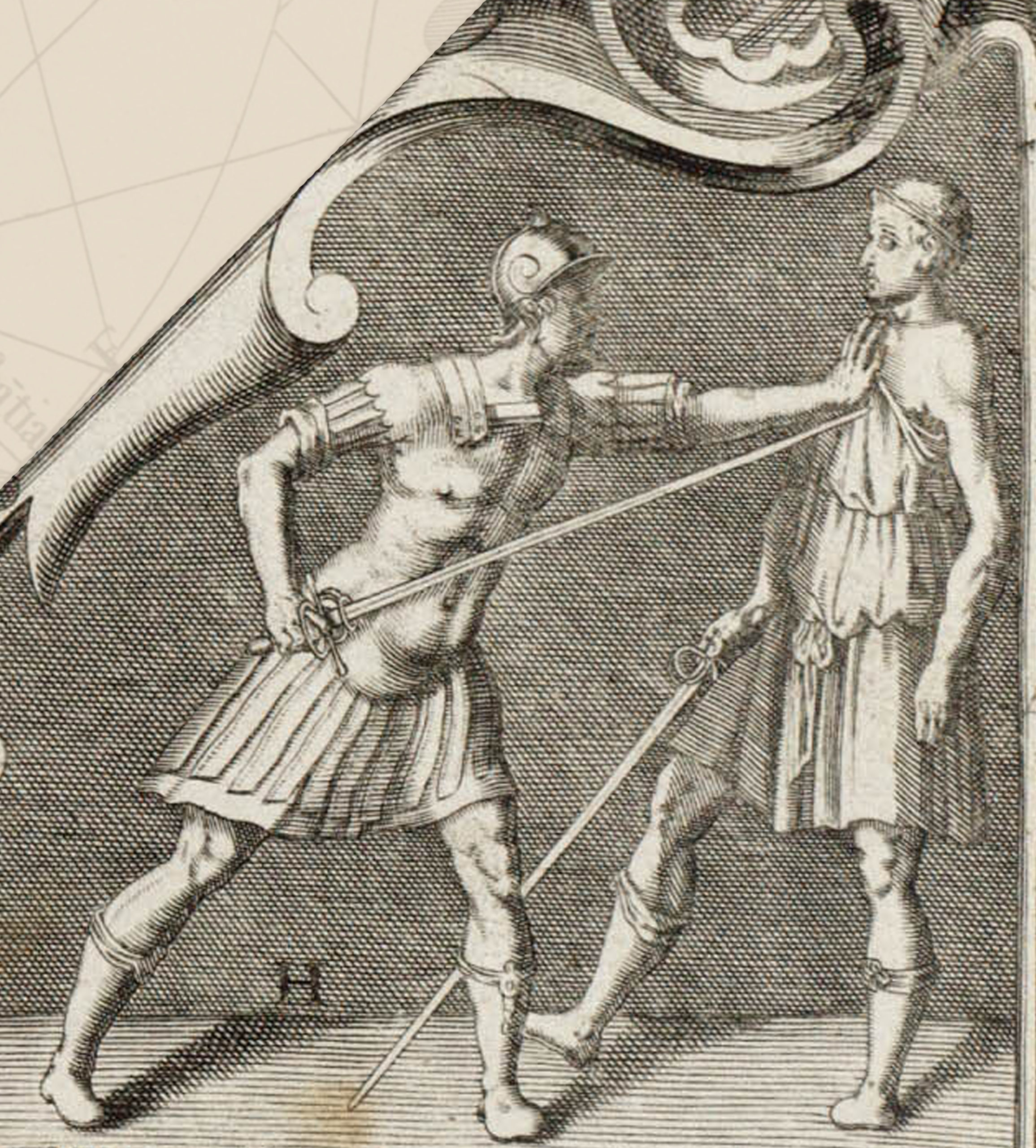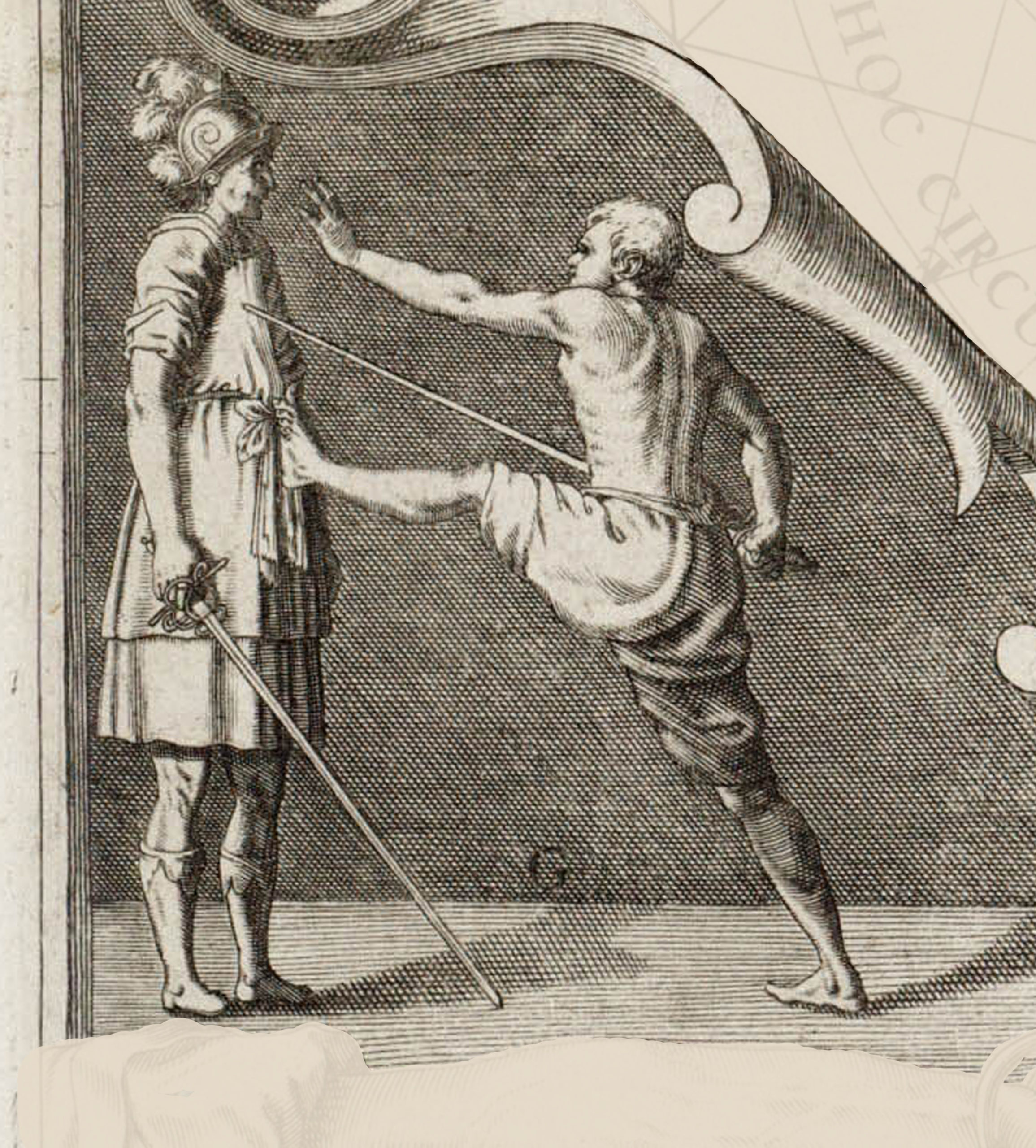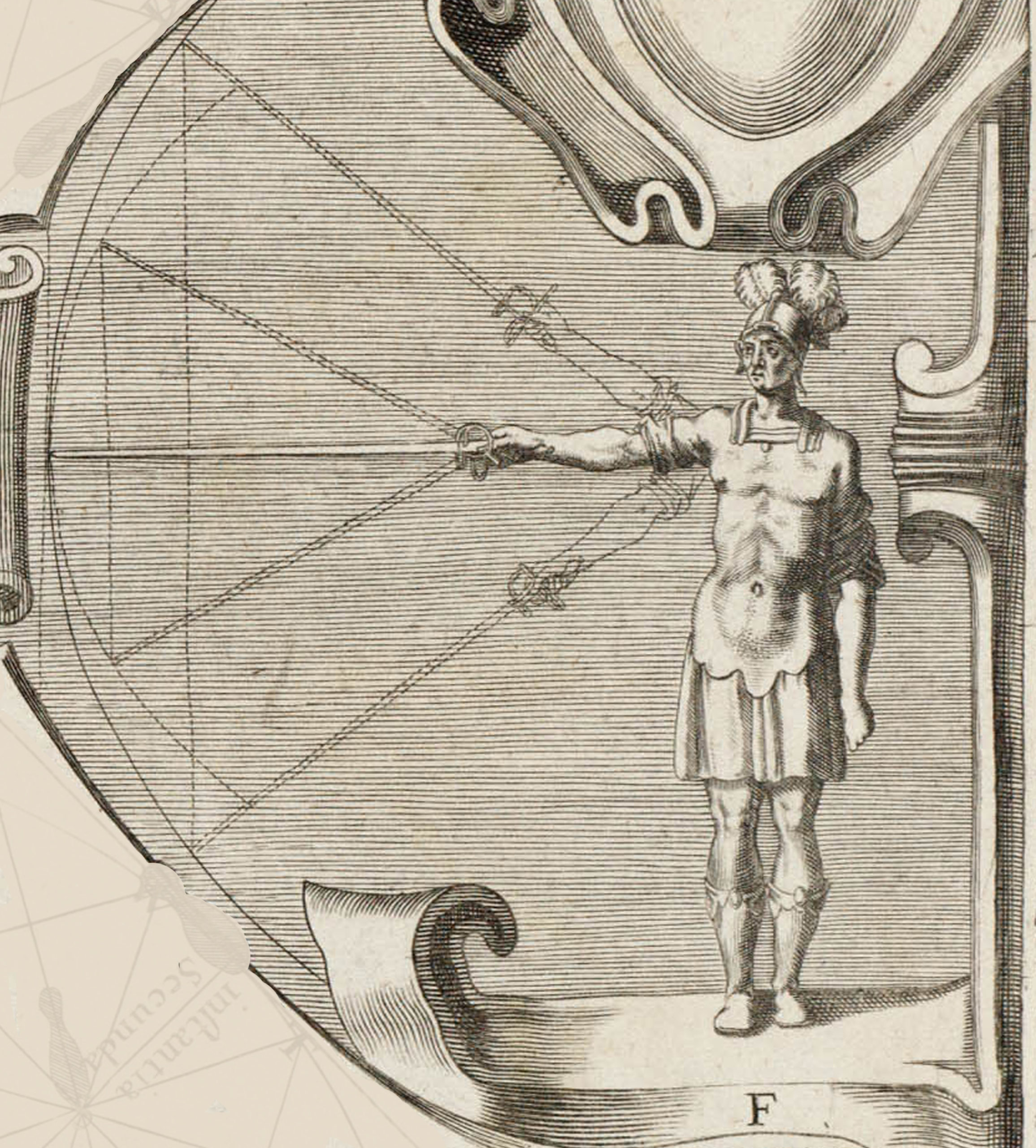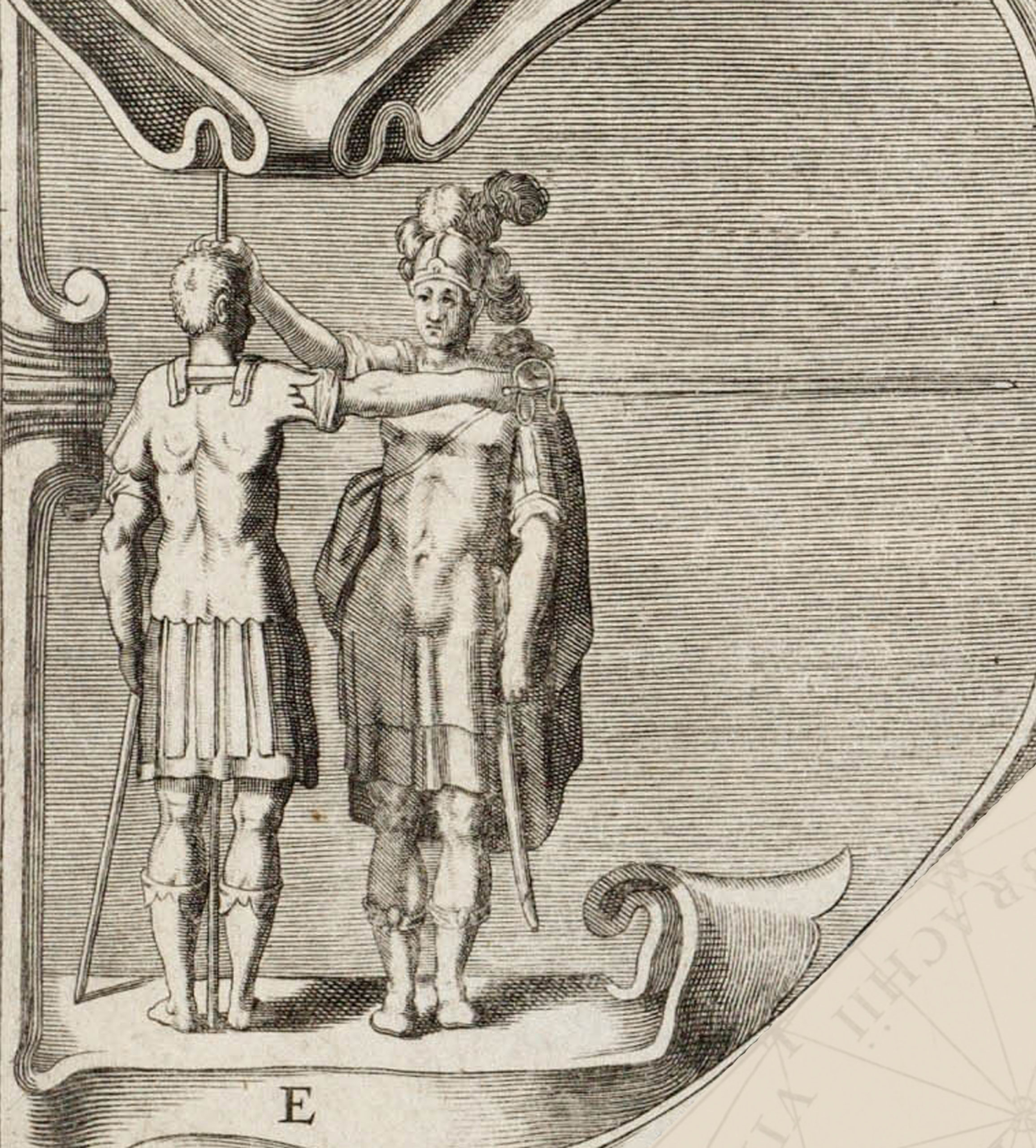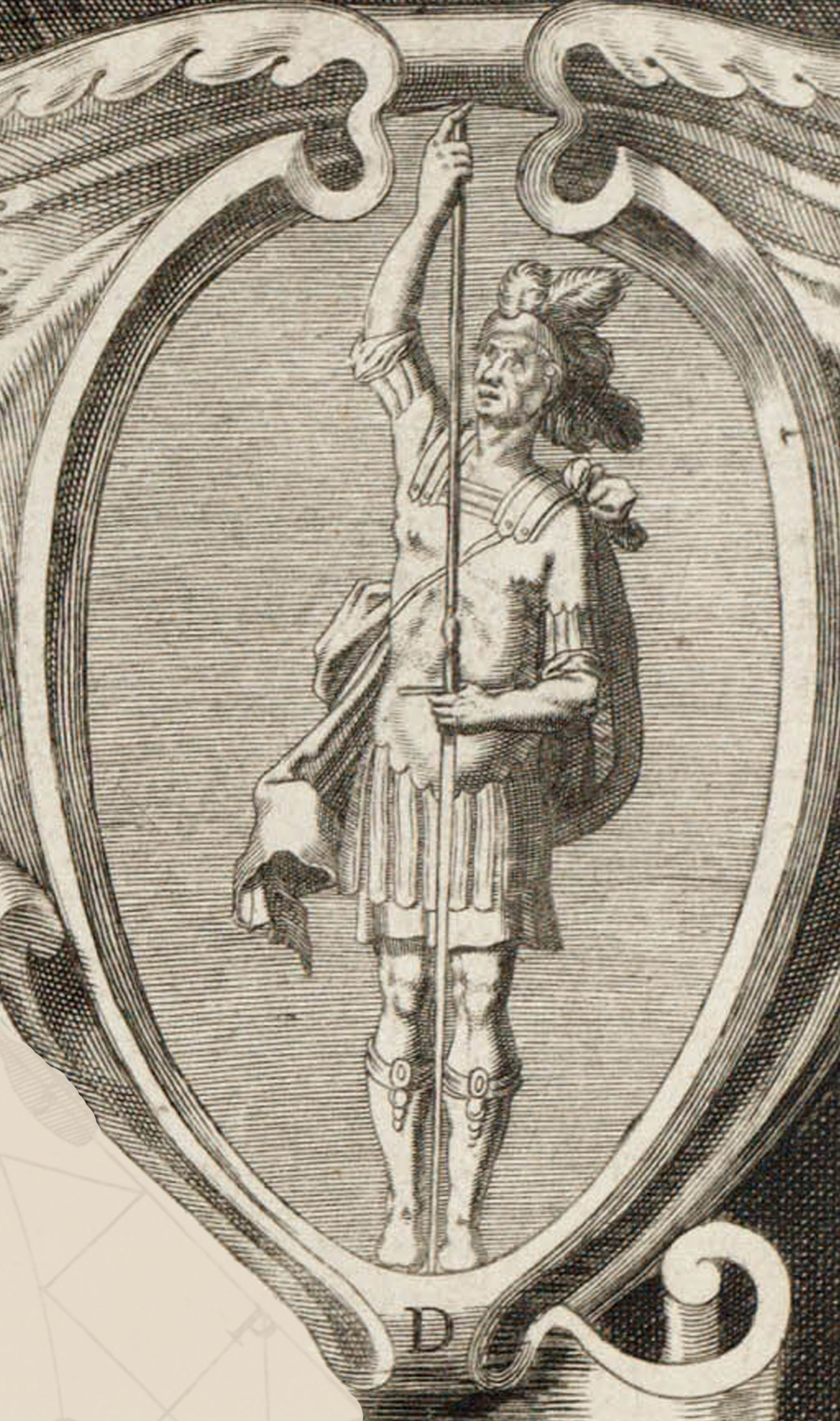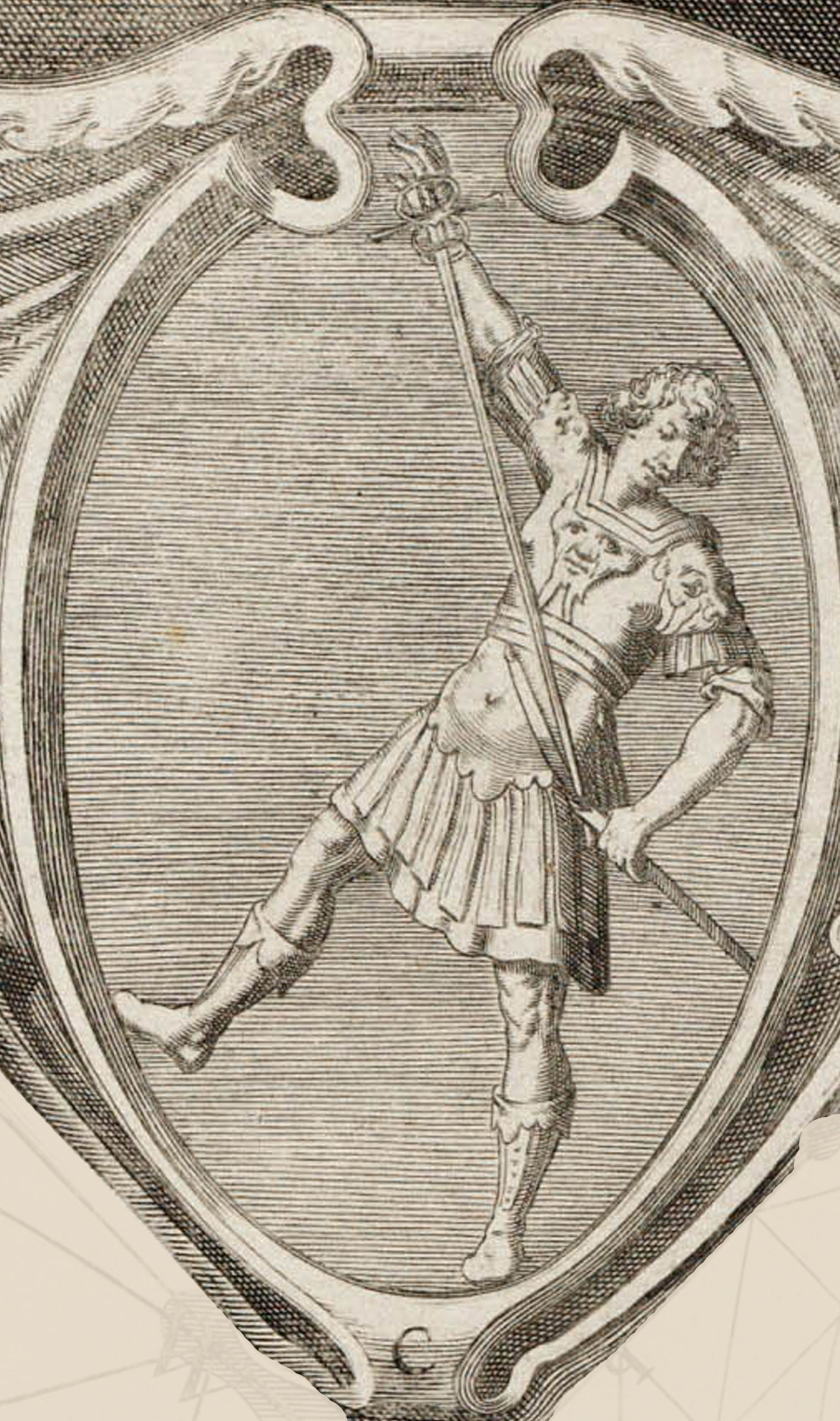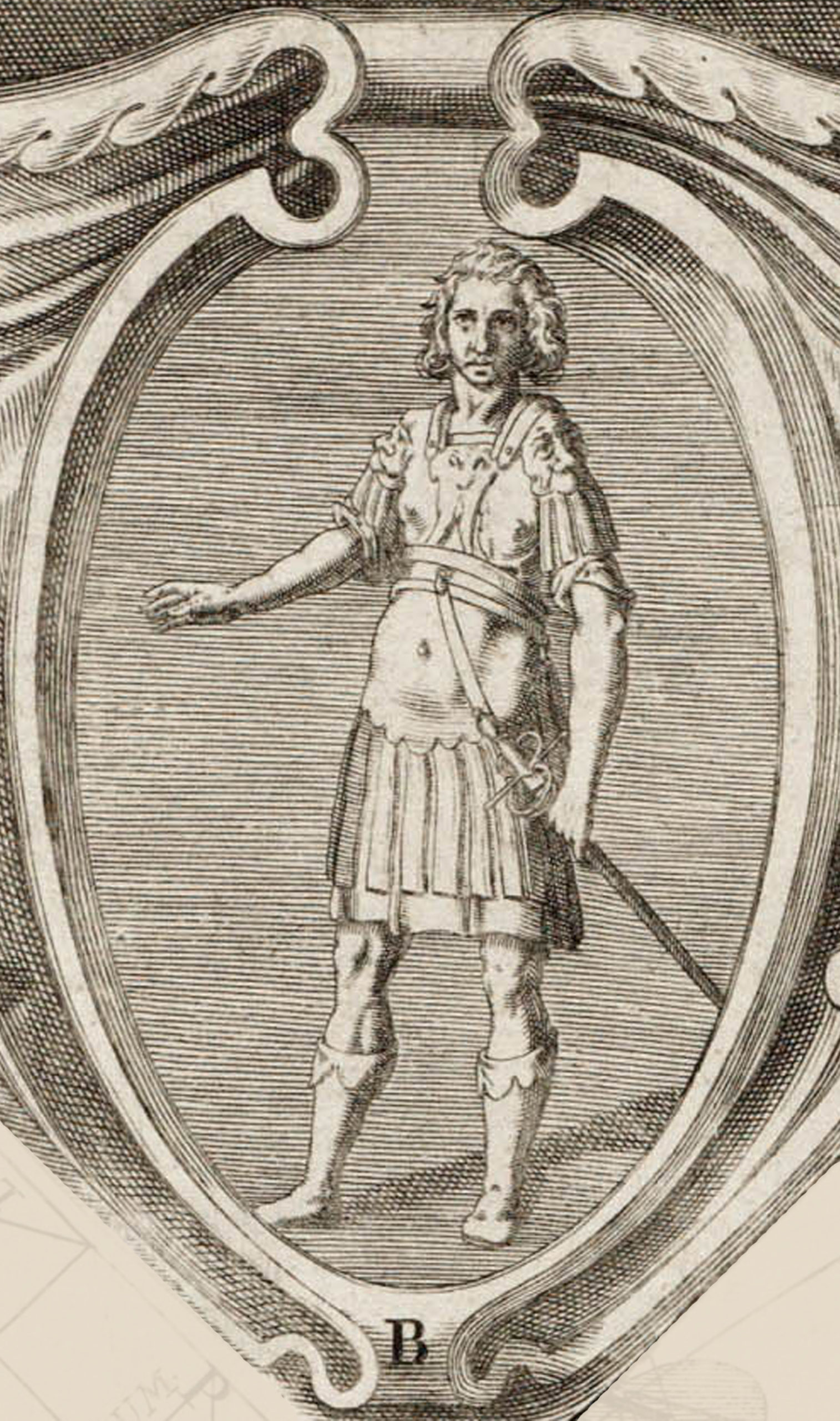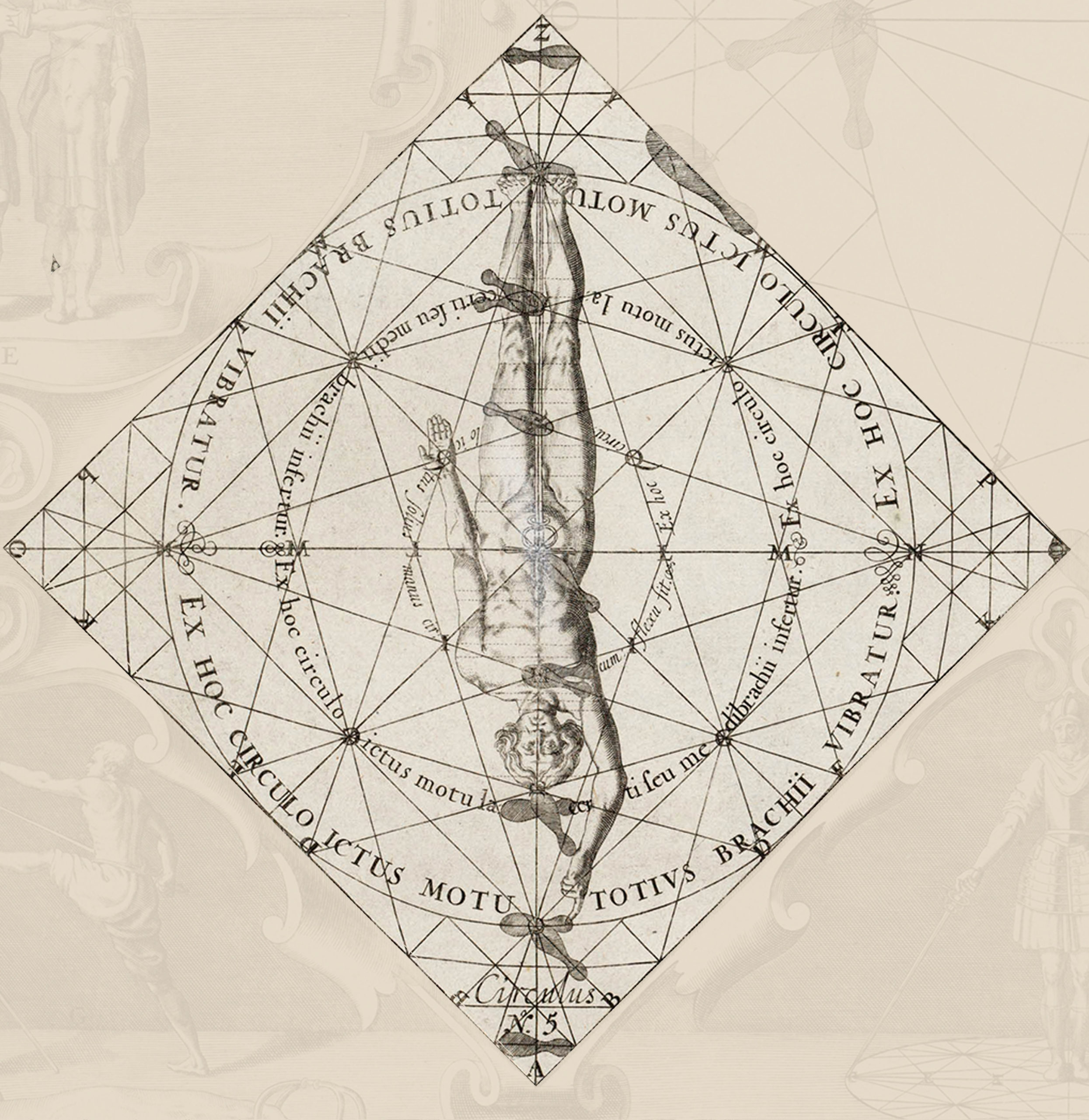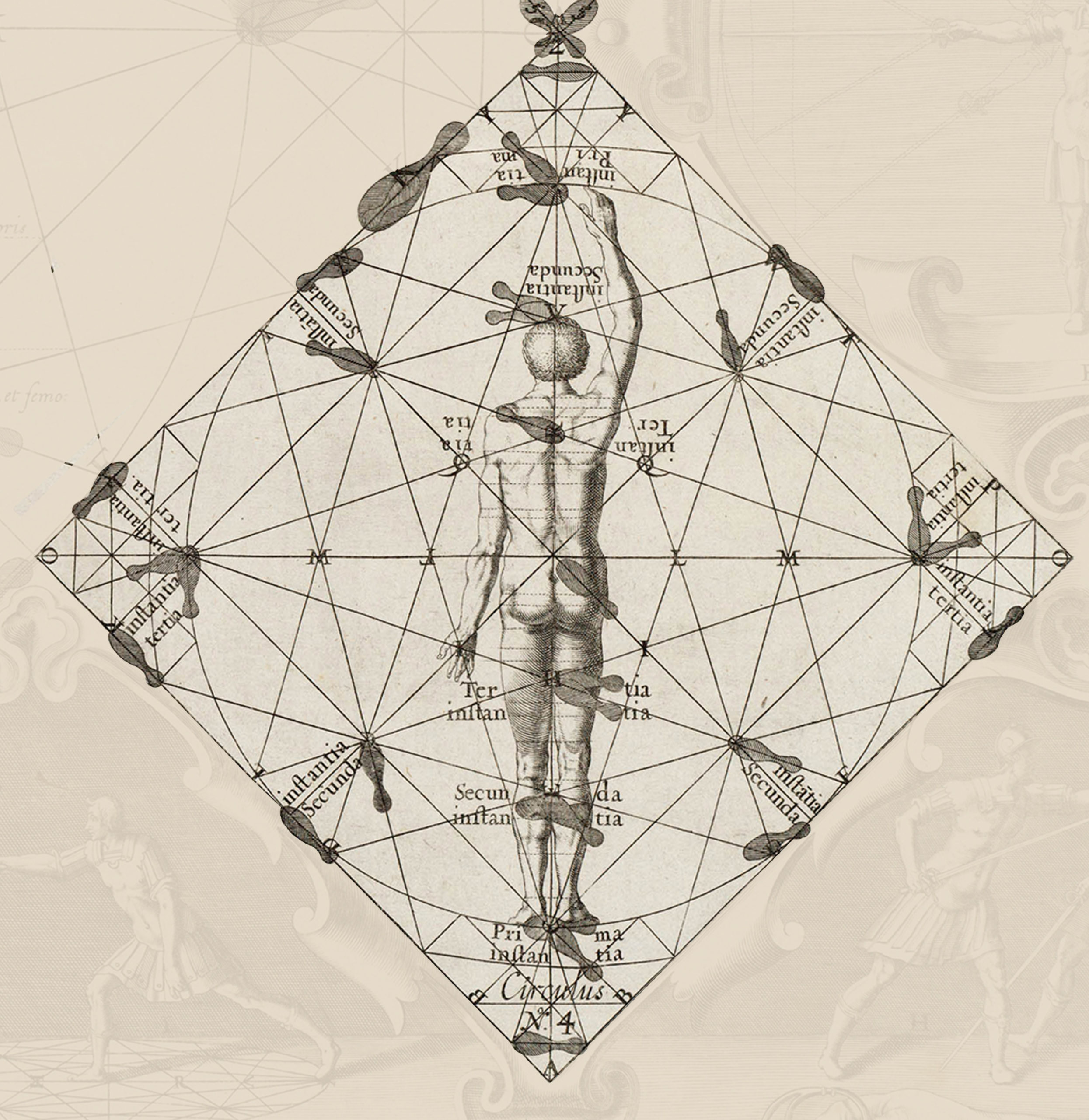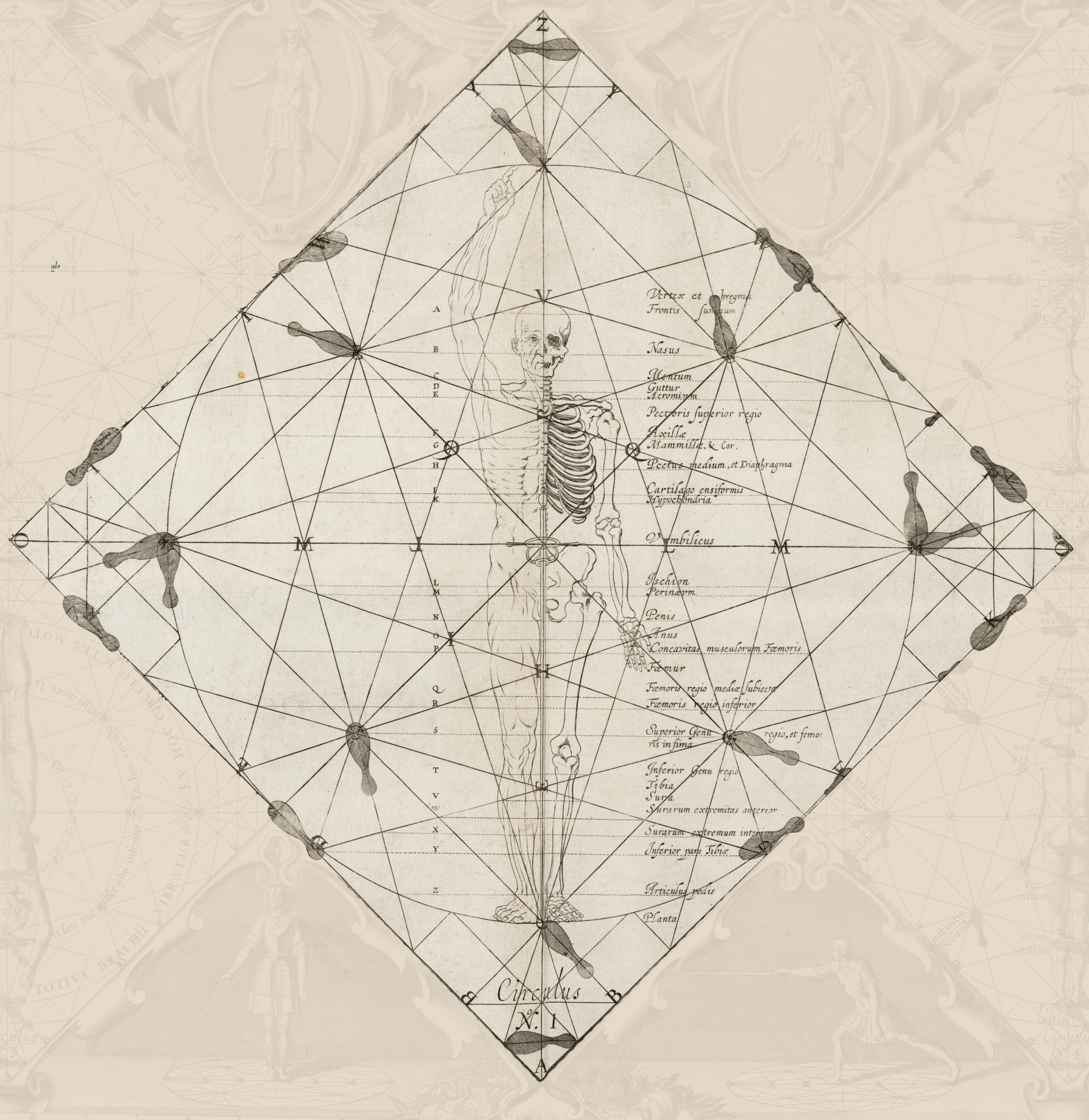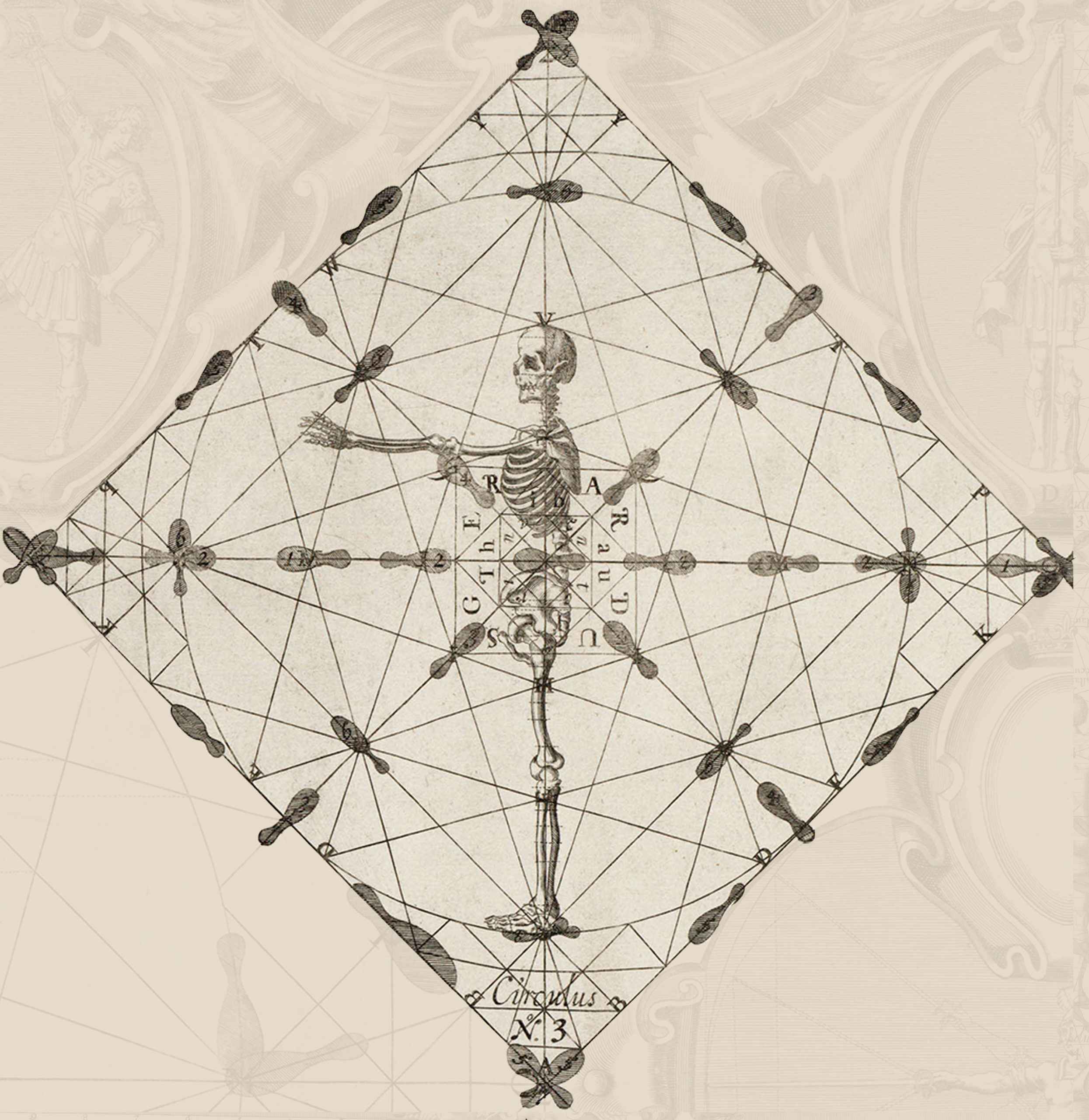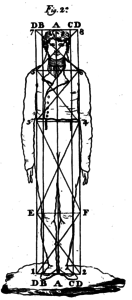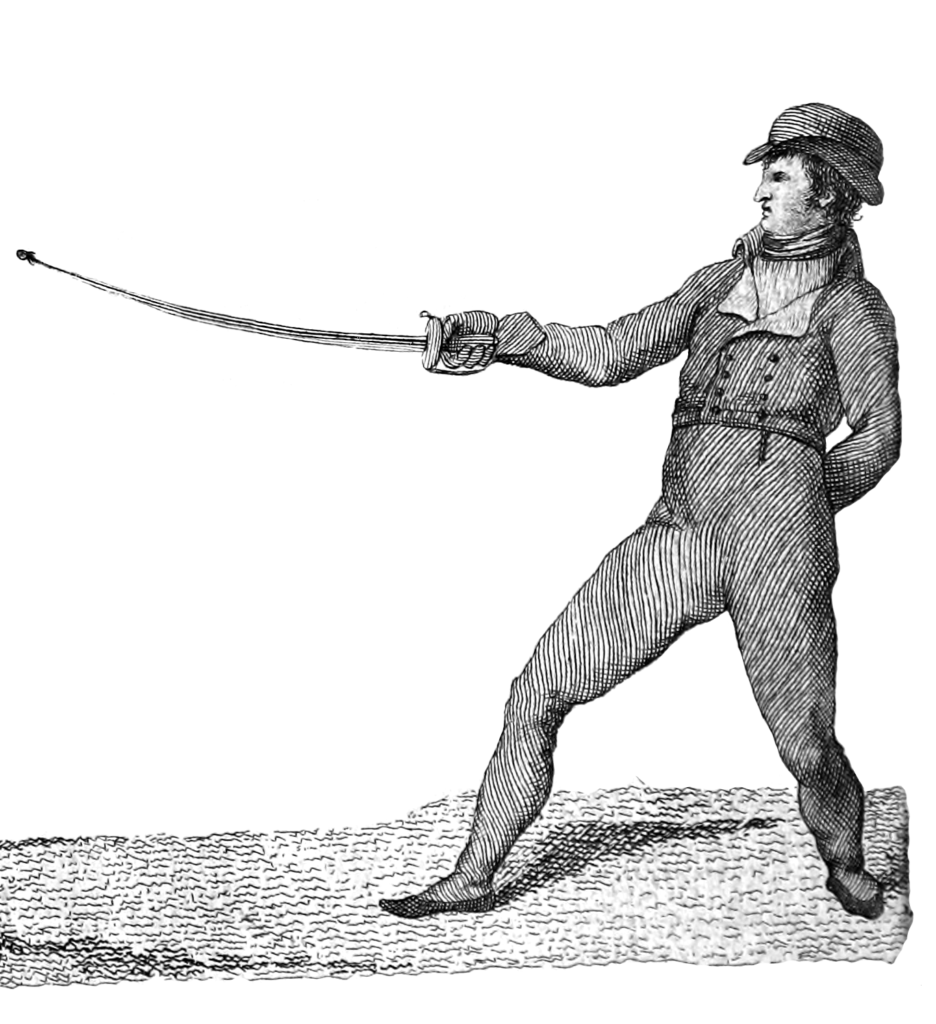182. The previous chapters have seen the enemy attacked on the other guards. It remains to be done on fifth, the present object. Therefore, suppose that the opponent is fixed in the stated guard so that, throwing a thrust of first, a parry of sixth occurs and thus gives reason to attack the points that it uncovers, which are presented in al of the battles in this chapter.
Thrust of Second on the Parry of Sixth, and its Removal
183. In attending to the removal of sixth, with which the contrary repaired the thrust of first, free the point above the guard, turn the hand fully into third, and balance to the rear. From here, direct a thrust of second with the balance forward and motion to square. Remove this thrust with the parry of second. The points that are uncovered have been stated in paragraph 102.
Vertical Reverse on the Parry of Sixth, and its Removal
184. The contrary, having repaired with sixth the thrust of first, raise the point of the sabre with a slight movement of the wrist and half arm, direct a vertical or diagonal cut to any point of the contrary, ensuring that the recovery has no other time than that of the execution. Remove this blow with high third, taking care to lower the elbow and raise the tip of the sabre with the utmost promptness for its good effect. The points that are uncovered have been seen in paragraph 147.
Diagonal Reverse to the Side on the Parry of Sixth, and its Removal
185. Having made the enemy take the parry of sixth to defend himself from the thrust of first that you threw, free your sabre above the enemy’s guard, making at the same time a balance to the rear, and turn the hand to the half third position, bend the elbow so that the spine of your weapon is near your left shoulder, directing the edge to the line you intend to attack, and balance forward, extending the arm at the same time, executing with this a diagonal reverse with the motion to square. Remove this blow with the parry of second, grasping the sabre firmly. The points which are uncovered in this are advertised in paragraph 102.
186. In discussion of the security of this exercise, I can do no less than to recommend reading the first chapter of oppositions in the second part so that, without omitting anything arranged there, it will give this part the entire perfection of which it is capable.

